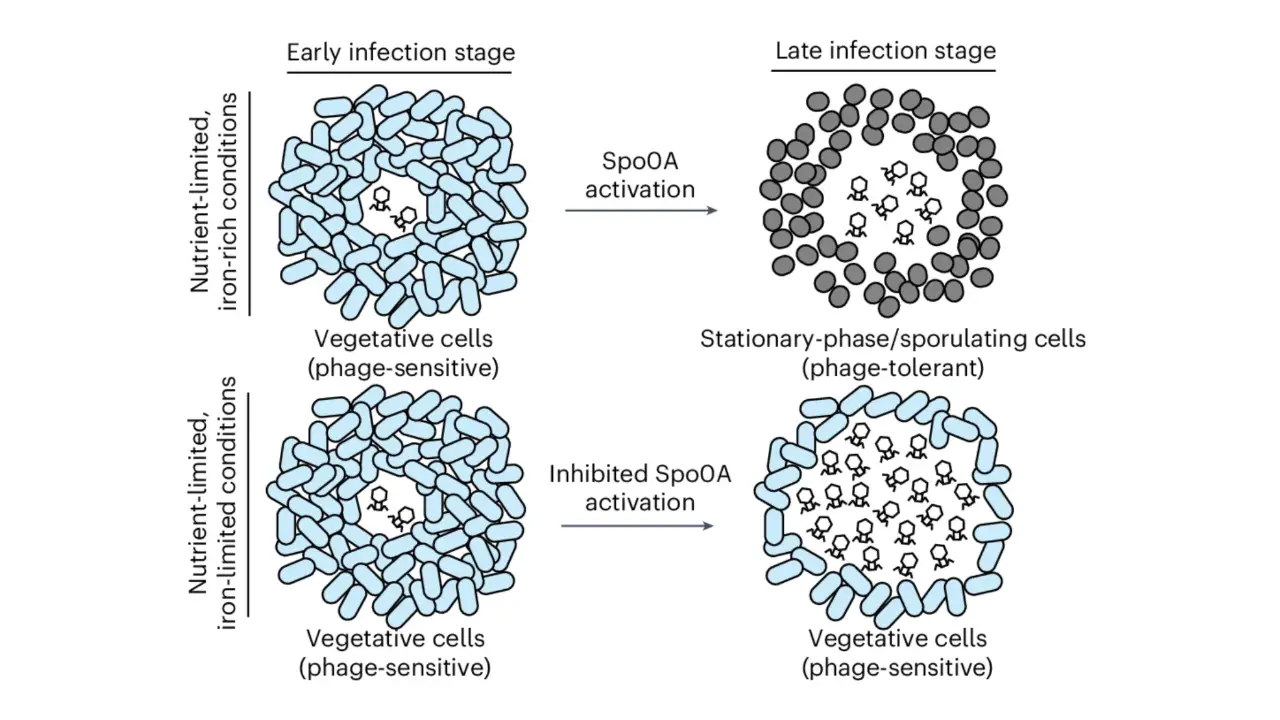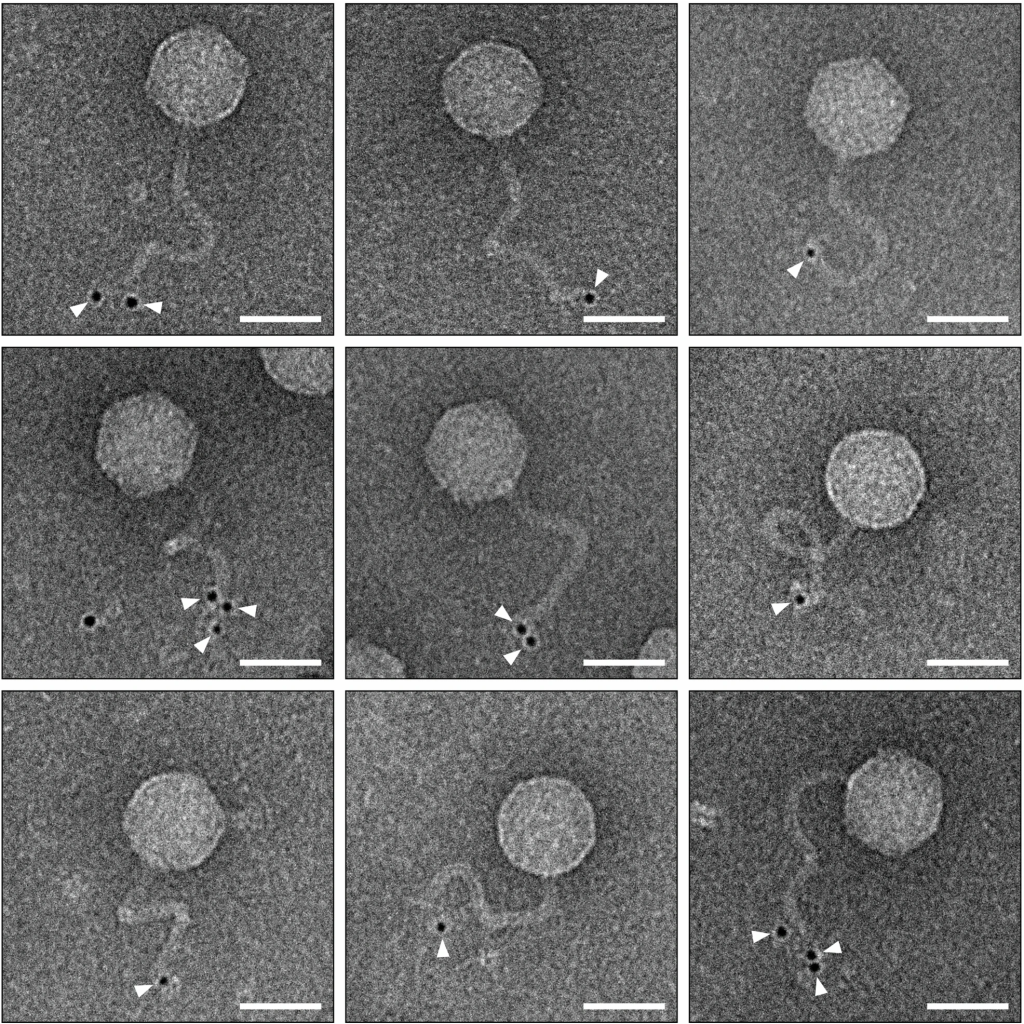Scientists from Indiana University Bloomington have published a study that has revealed a fascinating new mechanism by which bacteria can gain a competitive edge in microbial communities. The study explores how bacteria produce secondary metabolites that not only kill their rivals but also make them more susceptible to viral infections, suggesting that viruses may play a crucial role in microbial competition.
The study focuses on the interaction between Streptomyces sp., a soil-dwelling bacterium, and Bacillus subtilis, another common bacterium. Both species compete for resources in the soil, but researchers discovered that Streptomyces sp. produces a secondary metabolite, coelichelin, which weakens Bacillus subtilis‘s defences against bacteriophages.
This finding stems from the researchers’ hypothesis that bacteria may secrete natural products that sensitize their competitors to phage infection. In their experiment, they used a binary-interaction screen to identify the effects of various metabolites on Bacillus subtilis. They found that coelichelin, a siderophore, works by sequestering iron from Bacillus subtilis, disrupting its ability to activate its key regulatory protein, Spo0A. Spo0A plays a crucial role in regulating the stationary phase and sporulation, processes vital for bacterial survival. With this mechanism impaired, Bacillus subtilis becomes vulnerable to infection by several lytic bacteriophages, including SPO1, SP10, SP50, and Goe2.
The study also delved deeper into metabolomics analysis, revealing that other bacterial natural products might also create similar competitive advantages by facilitating phage-mediated attacks on rival bacteria. This suggests that the interaction between bacterial metabolites and viruses is a key factor in microbial competition, shaping the dynamics of bacterial populations in complex environments.
The implications of this research are significant for both basic science and medical applications. By better understanding how bacteria use phages and metabolites to outcompete their rivals, scientists may be able to develop novel approaches for managing microbial populations. This could prove especially valuable in the fight against antibiotic-resistant bacteria, as phage therapy, coupled with specific bacterial metabolites, may offer a promising alternative to traditional antibiotics.
Their published study can be accessed here: Zang, Z., Zhang, C., Park, K.J. et al. Streptomyces secretes a siderophore that sensitizes competitor bacteria to phage infection. Nat Microbiol 10, 362–373 (2025). https://doi.org/10.1038/s41564-024-01910-8. Cover page photo credit to the study


